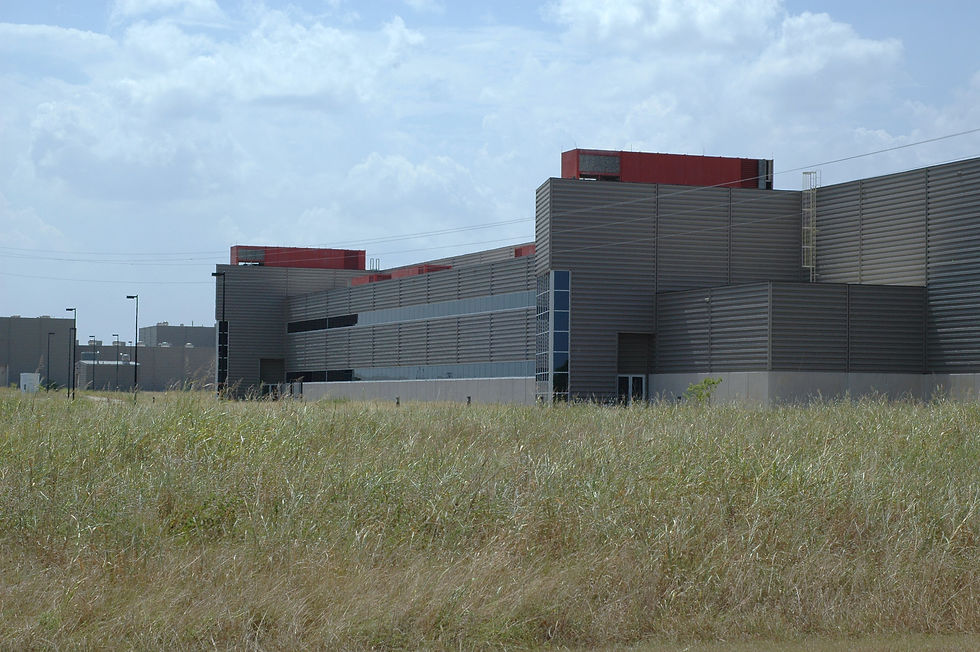The Superconducting Super Collider: End of the Era of Big Science
- Jump-Starting America

- Mar 25, 2019
- 3 min read
The Superconducting Super Collider (SSC) was intended to become the world’s largest particle accelerator. It was originally proposed in the late 1970s and was the subject of intense competition over the location of the facility during the late 1980s, when the Reagan Administration proposed to spend between $4 and $6 billion to build it. A site around Waxahachie, Texas, about 30 miles south of Dallas, was ultimately selected in November 1988. Construction proceeded from 1991 through late 1993, when the project was terminated by an October budget vote in the US Congress.
The project was physically about 20% complete when cancelled. Many miles of tunnels had already been excavated, and several support buildings remain standing at the site. Much of the site is now privately owned. The final budget estimate for completion of the project was $8.25 billion - of that, $1.5 billion had been spent by May 1993.
The SSC was a major subject of media coverage and debate starting in 1987, during the competition for the site. 43 sites were proposed in 25 states. Local residents and political leaders at several sites were actually not supportive of the project - state government officials appear to have typically led the process of proposing sites. Concerns over the eminent domain seizure of land appear to have motivated most of the local opposition.
There was a series of congressional hearings on the design and site selection of the SSC in 1987 and 1988 that included dozens of witnesses, including Nobel Prize-winning physicists Stephen Weinberg and Leon Lederman. The hearing before the House Committee on Science, Space, and Technology on May 26, 1993 is regarded as one of the fiercest battles over the SSC. Weinberg and Jerome Friedman, another Nobel Prize-winning physicist, led the defense of the SSC this time. Construction of the SSC was cancelled by Congress in October of that year.
The planning for the SSC kicked off a debate among scientists, which continues today, over the relative value of large- and small-budget science projects. In 1988, the presidents of the National Academies of Science and the Association of American Universities both spoke against ‘big science’ and in favor of distributing funding across a larger number of smaller projects. From NYT coverage:
Both research leaders made it clear that they consider such prosaic matters as the training of young scientists to be more immediately important than big-ticket projects like the proposed $4.4 billion superconducting supercollider
This debate featured prominently in the 1993 Congressional hearing. The fusion energy community is now at the center of this debate due to the enormous budget for ITER, the experimental fusion reactor currently under construction in France. The latest total cost estimate to complete construction of ITER is over $25 billion.

References



The Superconducting Super Collider (SSC), planned for Texas, faced local opposition due to land concerns. Despite Nobel laureates' support, Congress canceled the project due to budget debates, sparking discussions on funding large versus small science projects. Looking for alternative discussions? Try omegle chat!
Get ready for unparalleled excitement with our stunning Gurgaon Escort girls. There are models for every preference, from curvaceous to petite. Spend an intimate evening or a reckless night of passion with a Gurgaon Escort girl, and the Gurgaon Escort Service will ensure an exciting experience that will take your breath away.
Very informative blog, highly recommended
Black Cherry Dream strain
Wie KMU von digitalen Lösungen für die indirekte Materialbeschaffung profitieren können
Im heutigen wettbewerbsintensiven Geschäftsumfeld hat sich die indirekte Materialbeschaffung zu einem strategischen Hebel zur Verbesserung der Betriebseffizienz und Kostenkontrolle entwickelt. Im Gegensatz zu direkten Materialien, die in das Endprodukt einfließen, unterstützen indirekte Materialien – wie Bürobedarf, Wartungsgeräte, IT-Peripheriegeräte und Facility-Management-Tools – den täglichen Betrieb, werden in Beschaffungsstrategien jedoch oft übersehen. facura.de unterstützt Unternehmen dabei, das verborgene Potenzial ihrer indirekten Beschaffungsprozesse durch digitale Innovation, Transparenz und Automatisierung zu erschließen.
Moderne Unternehmen erkennen, dass ineffiziente indirekte Materialbeschaffung zu Budgetverschwendung, fragmentierten Lieferantennetzwerken und Compliance-Problemen führen kann. Hier setzt facura.de mit intelligenten Beschaffungslösungen an, die das indirekte Ausgabenmanagement zentralisieren und vereinfachen. Durch den Einsatz von Technologie erhalten Unternehmen Echtzeit-Einblicke in Ausgaben, Lieferantenleistung und…
Designed for those who value creative freedom, EroMe offers a personalized space for uploading and sharing artistic, Erome videos and photos without the limitations often imposed by mainstream platforms.